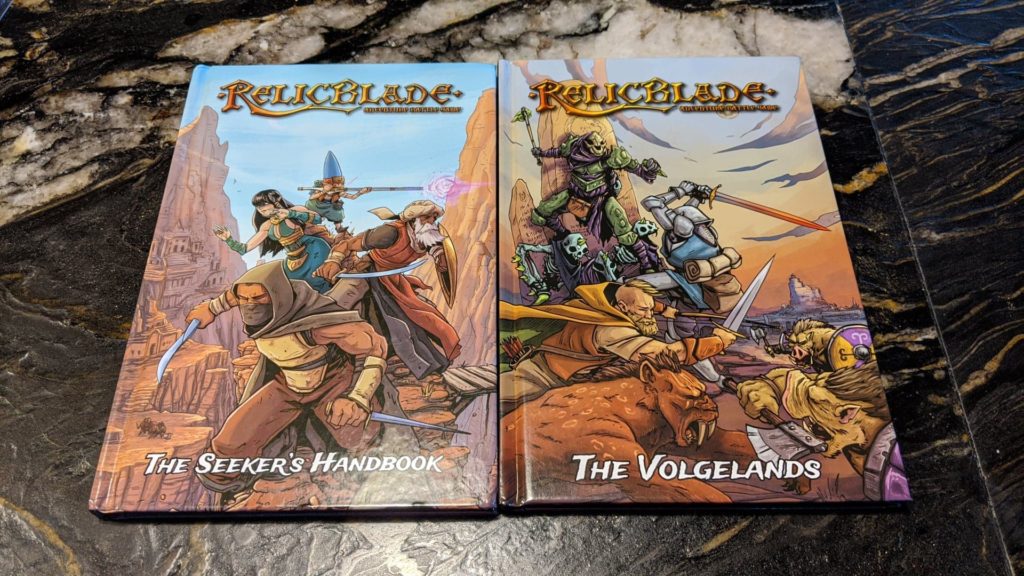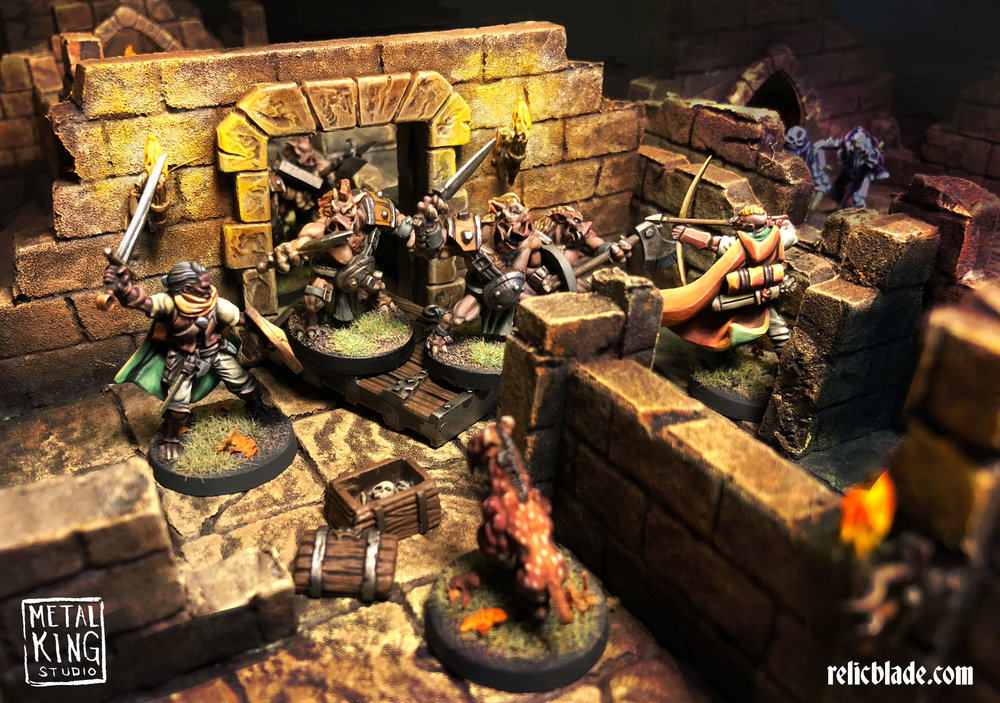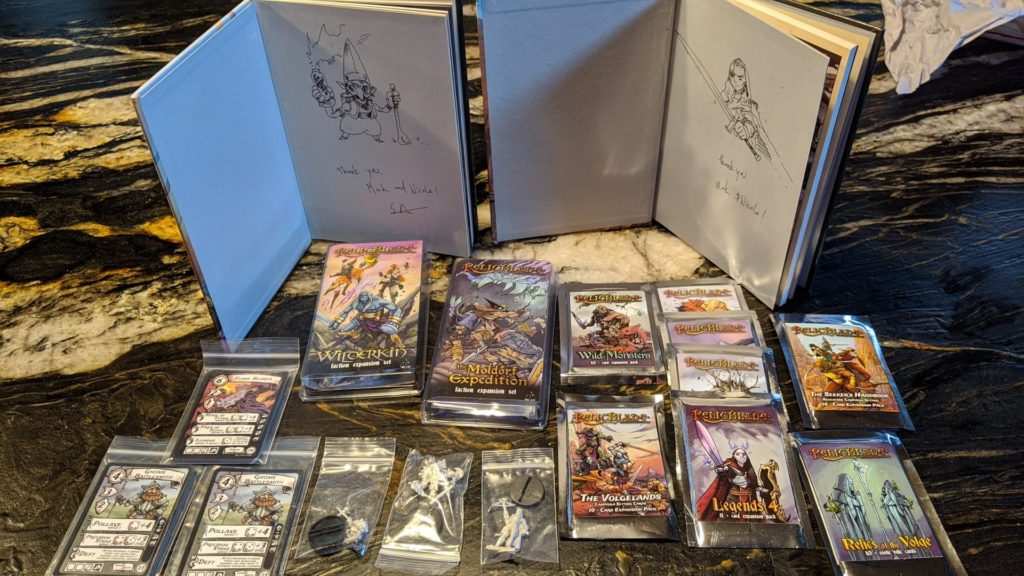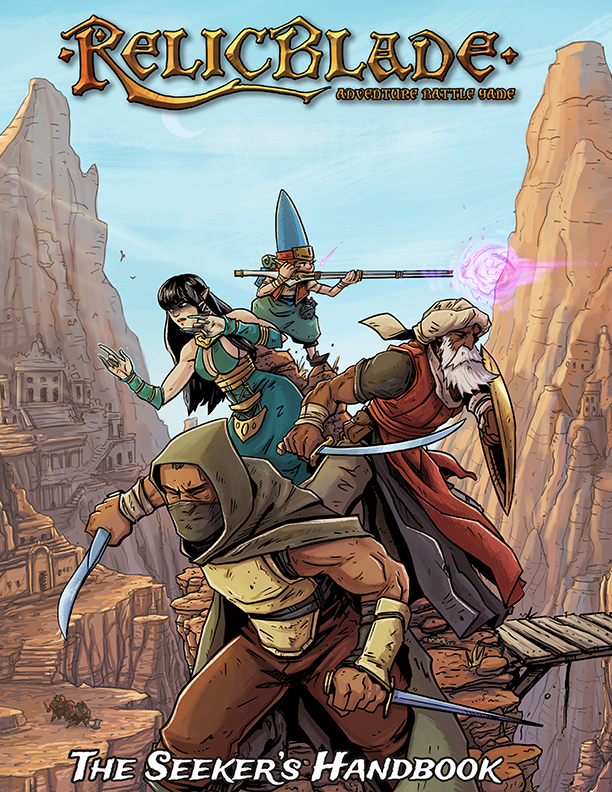An indie game, among indie-games, Relicblade impresses by bringing one man’s vision to the tabletop.
Let me preface this by stating this will not be an incredibly deep dive into the mechanics of Relicblade. There’s some of that, sure, but I mostly felt now was a good time to talk about this special little game, and broadly, how it makes me feel as a player.
Our hobby can occasionally be grim-dark, serious, and intense. Even the most mild-mannered of us can sometimes get worked into a competitive froth, or take things a hair too seriously. Hell, sometimes you just need a change of pace, and to lighten the mood. Relicblade is that soothing cold drink in the summer-time, tailor-made to just make you feel good, and have fun.
The work of Sean Sutter, at Metal King Studio, Relicblade is a true labor of love. Its existence borders on the miraculous, as every bit from sculpting, to metal casting, to book editing, to illustration is done by Sean. As someone who has worked in game design, let me tell you every one of those items is a daunting endeavor, and I cannot convey to you in words how insane it is that this game gets made, updated, restocked, and all, and on top of all of that… it is terrific.

In a “standard” game of Relicblade, players will field 100pts worth of the game’s two broad factions (Adversary and Advocate) which amount to a sleight three to five models. This game is skirmish with a capital “S” and is very much intended to be played in about thirty minutes, on a 2’x2’ surface. Players can use a pre-generated scenario or use a light scenario generator found in the game’s core rulebook, The Seeker’s Handbook, to set up the game in under a minute.
The experience of play itself is lean, in the most intentional of ways. It is a system of alternating model activations, and is driven by a clever dice/action-point system. If a given model has five action points, you stick five dice next to it, and they become your all encompassing resource pool. Said character could move its move-stat five times, using its entire pool, but find itself utterly exposed. Likewise one could make attacks, use special abilities, or bank dodge-tokens will provide significantly enhanced defense versus single attacks. In essence, it feels like the distillation of the tabletop hobby. Nothing seems wildly different (though the game’s critical system for rolling exact dice is great, and feels new), but everything here is pure and perfected, turning an ultra-clean set of rules into a set of smart tactical choices. Players, for example, can always spend an action to “focus”, which makes the next action more likely to succeed, or have added value. This allows a mitigation of raw dice-rolling, and asks the player, “How badly do you need this action to work?”
That said, clear, simple rules belie a surprising depth. Characters have “gear” slots, and every item sold for the game comes with at least some cards representing everything from weapons to skills/tactics, or otherwise. Players spend points before the game customizing their handful of models into something a little more personal. Make no mistake, there are even powerful combos awaiting those who really do prefer the competitive exercise.

There’s more, of course. The Seeker’s Handbook comes with a surprisingly substantial campaign engine, turning linked games into a light-RPG experience, and another book already provides the first, fleshed out, campaign setting, as well.
Meanwhile, the models are incredibly characterful, and absolutely ooze an unexpected, wholesome, charm. This extends to the artwork too, where Sean manages to really capture the spirit of the game which is simply, “fun”.
What is difficult to capture in describing the game, is just how relaxing and positive the experience can be. I liken it to this… Buying into Relicblade, is buying into the nicest community in the tabletop gaming world. For just one instance, Sean literally personalizes EVERY rulebook with art, or a message to the buyer. Likewise, over forty “Legends” units in the game are based on members of the community or fans. Further still, it is a fanbase and system free of “RAW vs RAI” debates, one which doesn’t overwhelm with multi-month hobby projects before you feel good about playing, and which has the nicest, most supportive Facebook group I have ever seen.

Maybe I am getting old, or maybe 2020 has just really worn many of us down, but somehow a game like Relicblade feels really meaningful right now. Its creator’s heart is worn on its sleeve, and its single desire is for you to have a great time. Many companies would have you believe that is true of their game as well, but Relicblade is a cynicism-free, PR-free, genuine treasure, just as we need it.
I cannot recommend this game enough, especially for individuals looking to introduce friends and family to this hobby which we all love so very much. It is everything you love about these kinds of games, trimmed of everything you don’t want after a hard, or stressful day. I love this industry, and hobby intensely… but man… once in a while a refreshing, small-scale, light game is just the absolute best way to refocus for a minute, change one’s perspective, and remind us that we love our toy soldiers.
I give Relicblade a “Wholesome/10” and encourage individuals interested to check out the Kickstarter that Sean currently has up for a great two-player starter/book combo. A quick search for Relicblade Storms of Kural should get you sorted.
And remember, Frontline Gaming sells gaming products at a discount, every day in their webcart!




It is indeed extremely impressive that a single person pulled this together. I have a few of the minis on my desk now actually, painted up a few and they’re quite nice. The scale is a little small for my taste but they’re good quality.
I definitely get scale shock every few months when I go paint some true 28mm scale models. I think most of the games you and I play most just got a little chonky over time. :-p
I know, right? It really caught me by surprise how much models have gotten bigger.